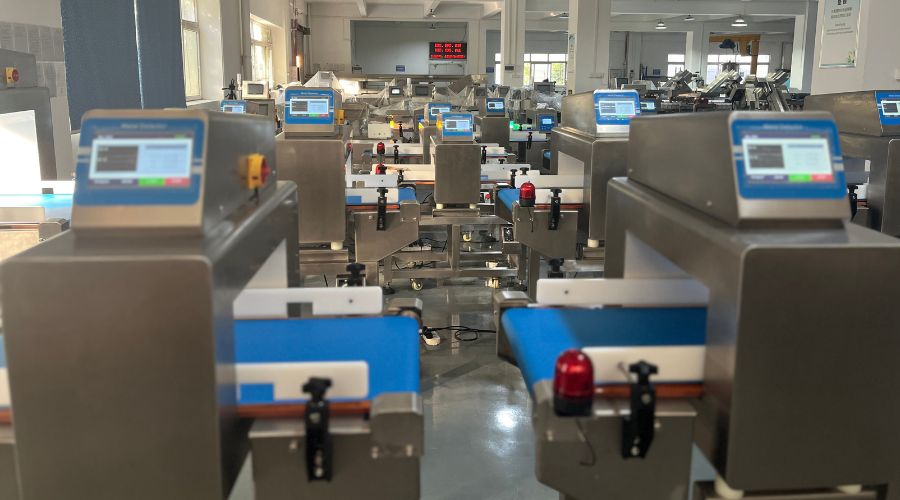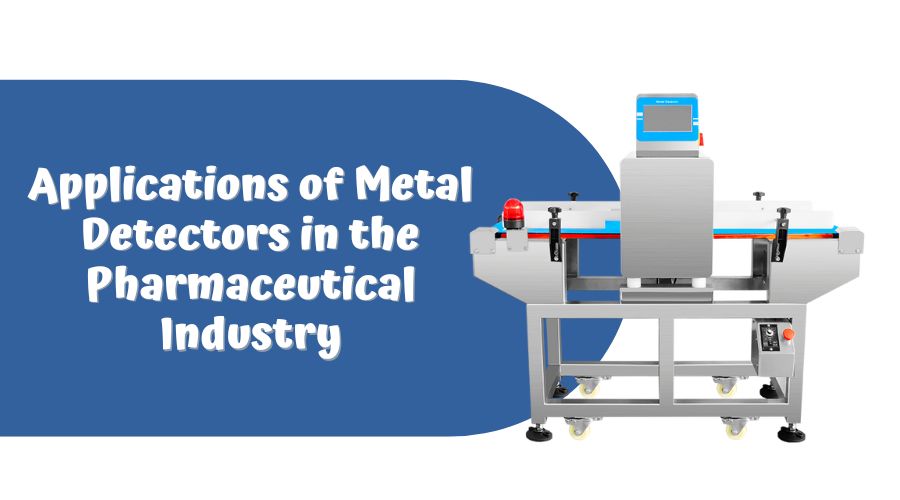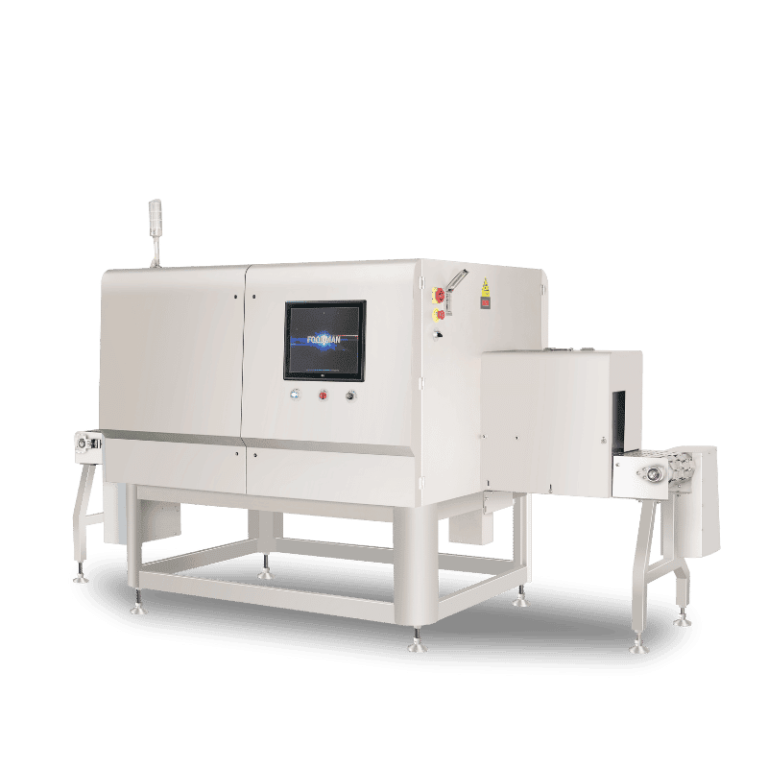Introduction: Ensuring Safety in Pharmaceutical Production
Ensuring product safety in pharmaceutical manufacturing is critical—not only to protect patients but also to maintain regulatory compliance and brand reputation. Contamination, even in trace amounts, can have serious consequences, making quality control a non-negotiable priority.

Importance of Contamination Control in Pharmaceuticals
Pharmaceutical products, including tablets, capsules, powders, and liquids, require stringent contamination control to guarantee safety and efficacy. Even a small metal fragment can compromise the integrity of a product, leading to recalls or regulatory penalties. By understanding how a metal detector works, manufacturers can proactively prevent contaminants from entering the production line. Knowledge of what do metal detectors detect and what can a metal detector detect is essential to ensure that every batch meets the highest safety standards.
Regulatory Frameworks: FDA, EMA, GMP Standards
Pharmaceutical manufacturers must comply with strict international regulations such as the FDA (Food and Drug Administration), EMA (European Medicines Agency), and GMP (Good Manufacturing Practice) standards. These regulations mandate robust quality assurance systems, including metal detection. By incorporating metal detectors in pharmaceutical production, companies can demonstrate compliance with guidelines and provide documented proof of inspection. Understanding how the metal detector works helps teams maintain audit readiness and meet regulatory expectations efficiently.
Role of Metal Detection as a Critical Quality Control Measure
Metal detection acts as a critical line of defense against contamination in pharmaceutical production. By knowing how a metal detector works and how do metal detectors work in pharmaceutical applications, operators can identify ferrous, non-ferrous, and stainless steel fragments before products are packaged and shipped. Implementing a reliable food metal detector or pharmaceutical-specific detector ensures that production lines consistently meet safety and quality requirements, protecting both patients and the manufacturer’s reputation.
Common Sources of Metal Contamination in Pharma
Metal contamination in pharmaceutical production can occur at multiple stages of the manufacturing process. Understanding these sources is essential to implement effective prevention measures and to maximize the effectiveness of metal detection systems.
Equipment Wear and Machinery Breakdown
One of the most common sources of metal contamination is the wear and tear of manufacturing equipment. Mixers, grinders, tablet presses, and conveyor belts may shed tiny metal fragments over time. Knowing how a metal detector works allows operators to strategically place detectors at critical points to catch these fragments before they enter the final product. Awareness of what do metal detectors detect ensures that even the smallest ferrous, non-ferrous, or stainless steel particles are identified promptly.

Raw Materials and Ingredient Handling
Raw materials and active pharmaceutical ingredients (APIs) can also introduce metal contaminants. During transportation, storage, or ingredient processing, materials may come into contact with metal surfaces or foreign objects. By understanding what can a metal detector detect, quality control teams can implement checks that minimize the risk of contaminants entering the production line. This proactive approach complements knowledge of how the metal detector works, providing an additional layer of protection.
Packaging Processes: Filling, Capping, And Labeling
Packaging machinery is another potential contamination source. Filling machines, capping lines, and labeling equipment may release small metal fragments due to mechanical wear or malfunctions. Learning how do metal detectors work in pharmaceutical production helps operators monitor these stages closely. By integrating metal detection systems effectively, companies can ensure that packaged tablets, capsules, and bottles are free of contaminants, maintaining both safety and compliance.
Case Studies of Contamination Incidents and Recalls
Real-world examples highlight the consequences of metal contamination in pharmaceuticals. Several incidents have resulted in product recalls, regulatory fines, and reputational damage. These cases underscore the importance of understanding how a metal detector works and deploying systems that reliably detect contaminants. By knowing what do metal detectors detect and what can a metal detector detect, pharmaceutical manufacturers can prevent similar issues, ensuring continuous product safety and protecting consumer trust.
How Metal Detectors Work in Pharmaceutical Applications
Metal detectors are a cornerstone of quality control in pharmaceutical production, ensuring that products remain free from metallic contaminants. Understanding how a metal detector works is essential for designing effective inspection processes and maintaining compliance with safety standards.
Basic Principle: Electromagnetic Field Detection
At their core, metal detectors operate by generating an electromagnetic field. When a metallic object passes through this field, it disrupts the signal, which is then analyzed by the detection system. Knowing how the metal detector works allows pharmaceutical operators to place detectors strategically along production lines, ensuring that every tablet, capsule, or powder batch is scanned effectively. Awareness of what do metal detectors detect helps in selecting the right equipment for different packaging types.
Sensitivity Requirements for Small Metal Fragments
Pharmaceutical products often require detection of extremely small metal fragments—sometimes only fractions of a millimeter in size. Understanding how a metal detector works in high-sensitivity mode ensures that even these tiny contaminants are reliably identified. This is critical because even minor fragments can pose serious health risks or trigger regulatory violations. By knowing what can a metal detector detect, manufacturers can calibrate systems appropriately for various product types.
Differences Between Ferrous, Non-ferrous, And Stainless Steel Detection
Different metals interact with the detector’s electromagnetic field in distinct ways. Ferrous metals, which are magnetic, are generally easier to detect. Non-ferrous metals like aluminum or copper require higher sensitivity, while non-magnetic stainless steel presents the greatest detection challenge. Understanding how do metal detectors work in pharmaceutical production enables operators to adjust system parameters to reliably identify all potential contaminants.
Minimizing False Positives from Product Effect (Moisture, Powders, Coatings)
Pharmaceutical products themselves can affect detection performance. High moisture content, fine powders, or metalized coatings can create background signals, known as product effects, which may trigger false positives. Advanced systems use adaptive algorithms to compensate for these effects. By mastering how a metal detector works under these conditions, operators can maintain high detection accuracy while minimizing unnecessary rejects, ensuring both food safety (or product safety in pharmaceuticals) and production efficiency.
Integration into Pharmaceutical Production Lines
Effective integration of metal detectors in pharmaceutical production lines is crucial to ensure consistent detection without slowing down operations. Proper placement, coordination with other machinery, and intelligent system management enhance both safety and efficiency.

Placement at Critical Control Points
The strategic positioning of metal detectors at critical control points (CCPs) ensures maximum effectiveness. Key locations include post-granulation, after tablet compression, and prior to packaging. Understanding how a metal detector works enables operators to identify where contamination is most likely to occur. Knowing what do metal detectors detect and what can a metal detector detect ensures that the system covers all potential risks, from tiny ferrous fragments to non-magnetic stainless steel pieces. Proper CCP placement is essential to maintain product integrity and protect consumer safety.
Pairing with Automated Rejection Systems
Detection alone is not enough; contaminated products must be efficiently removed. Modern production lines pair metal detectors with automated rejection systems, which eject compromised items without halting the entire process. Knowing how the metal detector works in real-time allows these systems to respond instantly, reducing downtime and preventing cross-contamination. By understanding how a metal detector works, pharmaceutical manufacturers can ensure that every batch meets strict safety and quality standards.
Synchronization with Filling, Weighing, And Packaging Processes
Metal detection systems operate most effectively when synchronized with other production line processes such as filling, weighing, and packaging. This integration ensures each product undergoes thorough inspection without disrupting overall workflow. Understanding how does a metal detector work in conjunction with these processes allows operators to optimize line speed and efficiency. By effectively combining metal detection with routine production operations, pharmaceutical companies can maintain compliance with regulatory standards and minimize the risk of contamination.
Industry-Specific Applications
Metal detectors are highly versatile tools in pharmaceutical manufacturing. Different product types present unique contamination risks, and understanding how a metal detector works allows manufacturers to tailor detection systems to their specific applications. Properly applied, metal detection ensures regulatory compliance, protects consumer health, and minimizes costly recalls or production downtime.
Tablets and Capsules
Tablets and capsules are particularly sensitive to metallic contamination due to their small size and high-speed production lines. Understanding how the metal detector works ensures that even tiny ferrous, non-ferrous, or stainless steel fragments are reliably identified before packaging. Knowing what do metal detectors detect and what can a metal detector detect helps operators set optimal sensitivity levels tailored to different shapes, coatings, or excipients of tablets and capsules. Additionally, effective metal detection in this context can reduce product waste and maintain consistent batch quality, which is crucial for both regulatory compliance and brand trust.
Powders and Granules
Powders and granules, common in pharmaceutical and nutraceutical products, present unique challenges because metallic fragments can easily mix with the bulk material, making detection harder. Advanced systems that account for how a metal detector works in free-flowing materials can scan continuously while maintaining production speed. Understanding how does a metal detector work in these scenarios enables manufacturers to minimize false positives, optimize calibration for different powder densities, and ensure comprehensive safety for large-scale production of granules, herbal powders, or dry supplement mixes.
Liquids and Syrups
Liquid pharmaceuticals, including syrups, suspensions, and injectable solutions, present detection challenges due to conductivity, viscosity, and packaging interactions known as the “product effect.” Modern pharmaceutical metal detectors are specially calibrated to handle these complexities. Knowing how a metal detector works in liquid applications ensures what can a metal detector detect with precision, even for minuscule fragments that could compromise product safety. Correct application reduces the risk of recalls, maintains batch consistency, and supports compliance with FDA, EMA, and GMP standards.
Nutraceuticals and Dietary Supplements
Nutraceuticals and dietary supplements often combine powders, capsules, tablets, or liquid components, and sometimes employ metallicized packaging for branding or preservation. Understanding how a metal detector works in these mixed product types allows operators to detect contaminants effectively across different forms. Awareness of what do metal detectors detect and what can a metal detector detect ensures that all products, regardless of form or packaging, are inspected comprehensively. This not only protects consumer health but also reinforces brand reputation in competitive domestic and export markets, helping companies maintain trust and expand their reach.
Benefits Beyond Safety
While the primary purpose of metal detectors in pharmaceutical manufacturing is to ensure food safety and maintain product integrity, their advantages extend far beyond simple contamination control. Understanding how a metal detector works and implementing it correctly can deliver measurable benefits across compliance, operational efficiency, and continuous quality improvement, creating a robust framework for overall production excellence.
Regulatory Compliance and Audit Readiness
Pharmaceutical companies operate under strict regulatory frameworks, including FDA, EMA, and GMP standards. Properly configured metal detectors in pharmaceutical production lines help maintain accurate and consistent inspection records, which are critical for regulatory audits. By understanding how the metal detector works, quality assurance teams can ensure that what do metal detectors detect aligns precisely with regulatory expectations. This alignment not only facilitates smoother audits but also reduces the risk of non-compliance penalties and reinforces the company’s commitment to maintaining the highest industry standards.
Preventing costly recalls and protecting brand reputation
Even a minor contamination incident can lead to extensive product recalls, revenue loss, and long-term brand damage. By knowing how a metal detector works, manufacturers can identify and remove even minute ferrous, non-ferrous, or stainless steel fragments before they reach consumers. Awareness of what can a metal detector detect enables proactive monitoring and early intervention, preventing recalls, safeguarding consumer health, and maintaining market trust. Furthermore, consistent use of advanced detection technology demonstrates a commitment to quality, which can differentiate a brand in competitive pharmaceutical and nutraceutical markets.
Enhancing operational efficiency
Modern pharmaceutical metal detectors are designed to integrate seamlessly into high-speed, automated production lines. Understanding how does a metal detector work allows operators to fine-tune line settings, balance sensitivity with throughput, and reduce false positives. Applying knowledge of how a metal detector works helps production managers maintain smooth workflow, minimize downtime, and reduce material waste. This integration not only improves production efficiency but also ensures that safety checks do not become a bottleneck, supporting both productivity and compliance simultaneously.
Supporting Continuous Quality Improvement
Beyond immediate contamination detection, metal detectors provide critical data that can feed into continuous quality improvement (CQI) programs. By analyzing detection events, operators can identify recurring contamination sources, monitor equipment wear, and spot process inconsistencies. Understanding how the metal detector works and what it can detect enables quality teams to implement corrective and preventive actions effectively. Over time, this data-driven approach supports enhanced operational standards, strengthens product consistency, and cultivates a proactive culture of continuous improvement and long-term product safety, benefiting both manufacturers and consumers.
Emerging Trends in Pharmaceutical Metal Detection
The pharmaceutical industry is constantly evolving, and metal detection technology is no exception. Advanced solutions now integrate artificial intelligence, multi-sensor systems, and IoT connectivity to enhance detection accuracy, operational efficiency, and predictive maintenance. Understanding how a metal detector works in these emerging applications is key for manufacturers aiming to stay ahead in quality control.
AI-Assisted Detection and Adaptive Sensitivity
Artificial intelligence (AI) is transforming metal detection by enabling adaptive sensitivity. Modern systems can learn from previous detection events and adjust their thresholds in real-time, minimizing false positives while maintaining high accuracy. Understanding how the metal detector works in AI-assisted scenarios allows operators to optimize sensitivity for complex products, ensuring even small ferrous, non-ferrous, or stainless steel fragments are detected. This innovation answers the critical question of what do metal detectors detect in challenging pharmaceutical formulations like powders, liquids, or nutraceutical blends.
Multi-sensor Systems: Combining Metal Detection with Vision or X-Ray
To further enhance safety, some pharmaceutical production lines are adopting multi-sensor systems that integrate metal detection with vision or X-ray technology. This combination provides complementary inspection capabilities, allowing operators to identify metallic and non-metallic contaminants simultaneously. By understanding what can a metal detector detect and how it interacts with other sensors, manufacturers can implement a robust, multi-layered quality assurance approach, reducing the risk of contamination in high-speed production lines and ensuring compliance with regulatory standards.
IoT and Remote Monitoring for Predictive Maintenance
The integration of Internet of Things (IoT) technology allows metal detectors to be connected to cloud platforms for remote monitoring and predictive maintenance. By analyzing performance data, operators can anticipate equipment wear, detect anomalies, and schedule timely maintenance without interrupting production. Understanding how does a metal detector work in connected environments ensures that how a metal detector works is optimized for real-time monitoring. This connectivity not only safeguards product integrity but also improves operational efficiency, reduces downtime, and supports a proactive maintenance culture.
Conclusion
Metal detection technology has become a cornerstone in modern pharmaceutical manufacturing. From ensuring product safety to enhancing operational efficiency, understanding how a metal detector works allows manufacturers to implement robust quality control strategies across their production lines.
Metal Detectors as an Essential Tool in Pharmaceutical Quality Assurance
Metal detectors play a critical role in pharmaceutical quality assurance, safeguarding products from ferrous, non-ferrous, and stainless steel contaminants. Knowing what do metal detectors detect and what can a metal detector detect enables operators to configure detection systems accurately for tablets, powders, liquids, and complex nutraceuticals. Properly maintained metal detectors ensure regulatory compliance and protect both consumer health and brand reputation.
Combining Safety, Efficiency, And Compliance in Production
Modern pharmaceutical production requires a balance between food safety, efficiency, and strict adherence to regulatory standards. By understanding how the metal detector works, manufacturers can integrate detection systems seamlessly into high-speed lines, minimizing downtime while maintaining precision. Knowing how a metal detector works in combination with automated rejection, filling, and packaging processes allows production teams to maintain consistent throughput without compromising safety or compliance.
Preparing for Smarter, More Integrated Detection Systems
The future of metal detection in pharmaceuticals lies in smarter, integrated systems. AI-assisted sensitivity, multi-sensor inspection, and IoT-enabled predictive maintenance are becoming standard. Understanding how does a metal detector work in these advanced configurations ensures that operators can maximize detection accuracy, reduce false positives, and optimize operational efficiency. Embracing these innovations positions pharmaceutical manufacturers to meet evolving safety standards while maintaining a competitive edge in the global market.

FAQ
Q: Why are metal detectors critical in pharmaceutical production?
A: Metal detectors protect patients from harmful contaminants, ensure regulatory compliance, and safeguard brand reputation by preventing costly recalls.
Q: How does a metal detector work in pharmaceutical applications?
A: Metal detectors generate an electromagnetic field. When metallic fragments pass through, they disrupt the signal, allowing the system to identify and reject contaminated products.
Q: What do metal detectors detect in pharmaceutical products?
A: They detect ferrous metals (iron, steel), non-ferrous metals (copper, aluminum), and stainless steel fragments—even those smaller than a millimeter.


